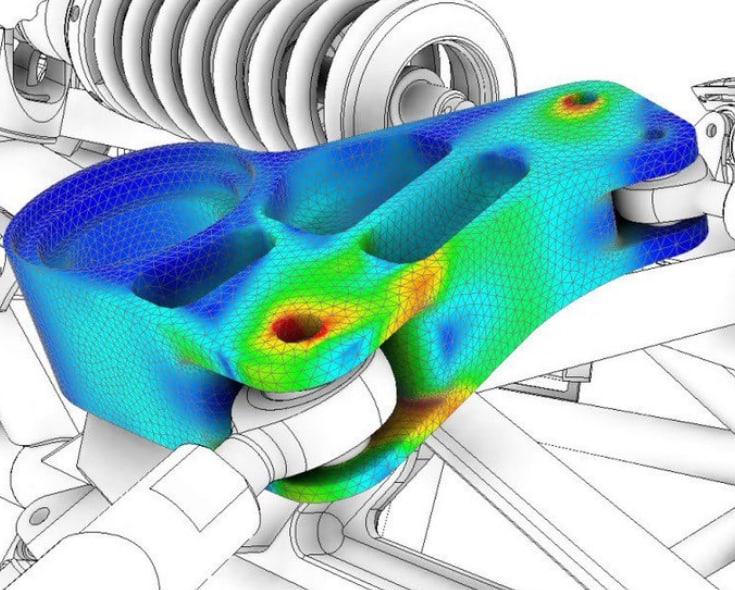Every business will often find itself having to evaluate capital investment projects. Such investment can be to expand production, replace aging equipment, or a myriad of other options. However, available funds through cash on hand or borrowing can be limited, and businesses must evaluate their investment options properly. There are a few tools for such evaluation. Still, different analyses can provide varying results, so which method is the correct tool for analysis?
The most common capital investment evaluation tools are the Payback Period (PP), Return on Investment (ROI), Net Present Value (NPR), and Internal Rate of Return (IRR). Each method can provide insight into investment options, but each also has limitations. In this blog post, we will define each method and touch on the advantages and limitations of each.
Payback Period
The Payback Period calculates the time it will take to recoup the money invested in a project. This method looks at the investment amount and cash generated to determine the Payback Period. For instance, if a company is Evaluating purchasing a new machine that costs $100,000, that will result in no new revenue and an annual savings of $50,000 in operations. The Payback Period would be two years.
The Payback Period is important to look at it because it can provide insight into how quickly cash invested is recouped. A project with a shorter Payback Period could be more attractive as it would allow the cash to be recouped and available for use more quickly. However, the Payback Period does not consider the risk of receiving future cash flows and cash flows beyond the Payback Period or the time value of money.
Return on Investment
The Return on Investment (ROI) is similar to the Payback Period, except it looks at all future cash flows of an investment. The ROI looks at anticipated cash flows over the project’s life (both negative and positive) to determine the ROI. ROI is calculated using the following formula
ROI = \frac{Net Return of Investment} {Initial Cost of Investment} *100%For example, let’s look further at the piece of equipment evaluated in the Payback Period example. In that example, the initial investment was $100,000, and the annual operations savings was $50,000 for the first two years. Looking beyond the two-year timeline, the operational savings would start to diminish by $5,000 per year due to increased maintenance until the end of the machine’s life at ten years, with an overhaul costing about $10,000 after five years of operation. At the end of life, the machine could be scrapped, but its scrap value would offset the cost of removing the equipment. This would result in the following cash flows:
| Year | Savings | Cost |
|---|---|---|
| 1 | $50,000 | |
| 2 | $50,000 | |
| 3 | $45,000 | |
| 4 | $40,000 | |
| 5 | $35,000 | $10,000 |
| 6 | $30,000 | |
| 7 | $25,000 | |
| 8 | $20,000 | |
| 9 | $15,000 | |
| 10 | $10,000 | |
| Total | $320,000 | $10,000 |
The resulting ROI would be:
ROI = \frac{\$320,000-\$1000,000-\$10,000} {\$100,000} *100\% = 210\%The advantage of ROI over the Payback Period is that it gives you information about the total anticipated return of an investment. The disadvantage of ROI is that it does not consider the time value of money.
Net Present Value
The Net Present Value (NPV) is similar to ROI, except it considers the time value of money. To calculate the NPV of a project, a company must first set the rate at which future cash flows will be discounted. This rate, known as the discount rate, can be set as either the interest rate of a loan to
acquire the cash needed, the rate of return needed by an investor, the current anticipated rate of investing in a stock, or the weighted average cost of capital (WACC). Once the rate is set, the NPV of all future cash flows is calculated and sum to get the NPV of the entire project. The NPV of each future cash flow is calculated using the equation:
NPV = \frac{Cash Flow}{(1+i)^t}Where
- i = Discount Rate
- t = Time Period
For example, let’s apply the NPV method with a discount rate set at 5% to the cash flows looked at in the ROI example above. Doing so, we get the following values for each of the cash flows:
| Savings | Cost | |||
|---|---|---|---|---|
| Years | Actual | NPV | Actual | NPV |
| 1 | $50,000 | $47,619 | ||
| 2 | $50,000 | $45,351 | ||
| 3 | $45,000 | $38,873 | ||
| 4 | $40,000 | $32,908 | $10,000 | $7,835 |
| 5 | $35,000 | $27,423 | ||
| 6 | $30,000 | $22,386 | ||
| 7 | $25,000 | $17,767 | ||
| 8 | $20,000 | $13537 | ||
| 9 | $15,000 | $9,669 | ||
| 10 | $10,000 | $6139 | ||
| Total | $261,673 | $7,835 | ||
The total NPV would be:
NPV = -\$100,000+\$261,673-\$7835 =\$153,838
The advantage of NPV is it takes into the time value of money, and when evaluating different projects, gives the current value of each project. The disadvantage of NPV is that it is typically weighted towards large, more costly projects that can show a higher NPV than smaller projects with less investment and smaller future cash flows.
Internal Rate of Return
The Internal Rate of Return (IRR) is similar to NPV, but rather than calculating the NPV of cash flows, it calculates the discount rate required to get NPV equal to zero. The IRR is then compared to a predetermined hurdle rate. If the IRR is greater than the hurdle rate, the project should be considered a strong candidate for acceptance. The hurdle rate is often set as the rate of return one could get by investing in a stock or other opportunities. IRR is calculated by setting NPV equal to zero in the following formula and solving for IRR:
NPV = \displaystyle\sum_{t=1}^T{}{\substack{ \frac{Net Cash Flow}{(1+IRR)^t}}}Where:
- IRR = Internal Rate of Return
- t = Number of Time Periods
Applying this formula to the example for NPV above, we get an IRR of 41%. This would clear the hurdle rate of 5 % stated in the NPV example and make this project a strong candidate for acceptance.
The advantage of IRR over NPV is that it does not consider an actual project value. It simply gives a rate of return, considering the time value of money. The disadvantage of IRR is that in not looking at overall value, many small projects with high IRRs will appear to be better than a larger, more costly project that could be more profitable due to the size of the investment and associated cash flows.
NPV and IRR can also account for risk by adjusting the discount rate to account for the risk level of future cash flows that are projections, and therefore may have inherent risk in that they may not actually be seen. Inflation and taxes can also be accounted for in NPV and IRR but were not included in this discussion to keep everything simple.
Conclusion
There are many tools available to evaluate capital investment projects, but each tool has advantages and weaknesses. AS such, each project should be evaluated using all available tools to get a better sense of the full impact of each project. Ideally, a business would invest in all projects with a positive NPV and IRRs above their hurdle rates. However, businesses often have limited funds and must be able to properly evaluate the projects available to them and decide the best forward given
their current funds and business goals. PPS has a strong understanding of the financial tools available for evaluating capital investments and can
help any business navigate the road ahead. Contact us to discuss how PPS can partner on your next product development or investment project to ensure you get the best return for your investment dollar.










One Response
Well said Thomas Cushing. I always enjoyed learning about these topics when we were in our MBA finance classes. It’s exciting when you apply these concepts to your business unit and projects to really make valuable and calculated decisions that maximize your investment capital and expected return. Too often I’ve see funds get “thrown” at issues in hopes of a solution, but it in reality you must take the time to evaluate your opportunity and have a roadmap on exactly what the investment will accomplish and the ancillary costs associated with that decision (which is where most people fail). Best of luck at PPS to you and Nick Duff.